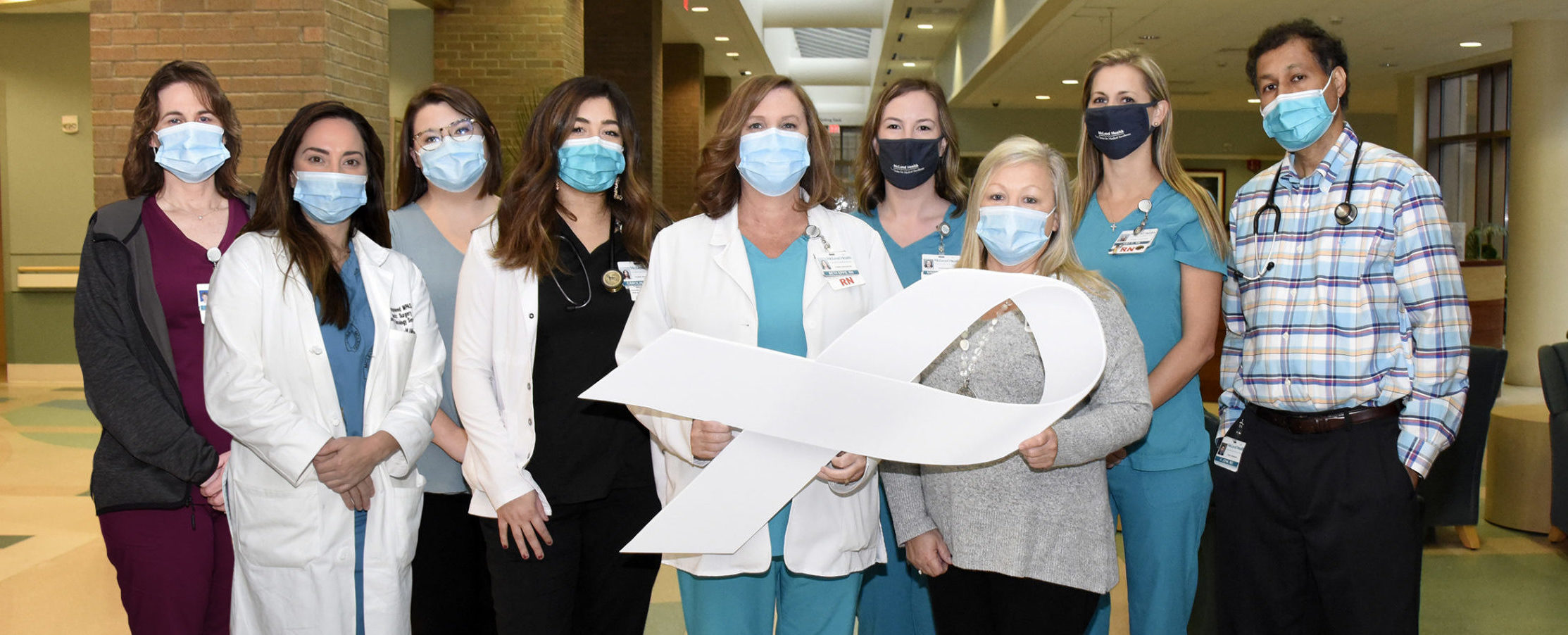
McLeod Health was looking for a better way to detect and track lung health across its one million plus patient population. The health system includes 7 hospitals across South Carolina, along with a growing network of primary care doctors and family physicians. McLeod turned to GO2 for Lung Cancer for help in creating an integrated approach across their care continuum.
That approach, known as the Healthy Lungs Initiative, is already showing results. Before they started, the majority of lung cancer cases were found at Stages III and IV. Now, in only year 2 of a 5-year plan, 42–44% of all cancers are being diagnosed at Stage 1.
The difference is saving lives.
“We wanted to create a continuum of care across the various dimensions and time horizons of lung cancer,” said Michael Rose, MD, senior vice president and chief innovation officer at McLeod Health.
Here’s how they did it.
1. Coordinated care for every patient.
The first step was to funnel every patient with a potential issue in their lungs using a single point of entry for all patients. The intake process includes lung cancer screening patients, patients referred by their primary care physician, as well as those where there have been nodules found incidentally through scans for other purposes.
“However a patient finds their way into our system, we won’t complete our engagement with that patient until all the threads are carried out—and we provide the coordination,” said Rose. This means, for example, that someone found to have a chronic illness (but not a lung issue) would be either referred for primary care services or disease management or prevention.
2. An integrated governance structure.
“Multidimensional illnesses require an integrated approach and not a traditional siloed model,” said Rose. To get buy-in, McLeod created an integrated governance structure for lung health that reports directly to the C-suite. The governing committee is co-led by a pulmonologist and a thoracic surgeon, and it includes administrators from the physicians’ group, radiology, and cancer.
3. New funding for new resources.
The financing for the Healthy Lungs initiative came from a combination of grants and internal funds. “To knit this together requires the kind of resourcing that isn’t in any particular cost center,” said Rose. “These various funding sources made it possible to get up and running.”
How GO2 for Lung Cancer helped shape the Healthy Lungs Initiative
Michael Rose stressed that GO2 for Lung Cancer provided critical help in both structuring their initiative and turning a concept into reality. It started with a financial plan and a template created by GO2 for Lung Cancer to enable health systems to do this work. When they populated the plan with their own data, McLeod Health could see how the program could be supported by revenue from screening and down-screen care.
Rose noted that the results show that “when you do the right thing for people, that creates a revenue source that is sustainable.”
GO2 for Lung Cancer also helped locate experts and technology to support the undertaking. A key component was data management software to track patients with incidental nodules that might be actionable in the future.
Finally, Rose explained that that the literature suggests that their integrated approach, done right, will catch lung cancer at the early stages 90% of the time. That’s the goal McLeod Health wants to meet, and they’re well on their way thanks to the Healthy Lungs Initiative.
McLeod Health is a GO2 for Lung Cancer Care Continuum Center of Excellence.

Leave A Comment